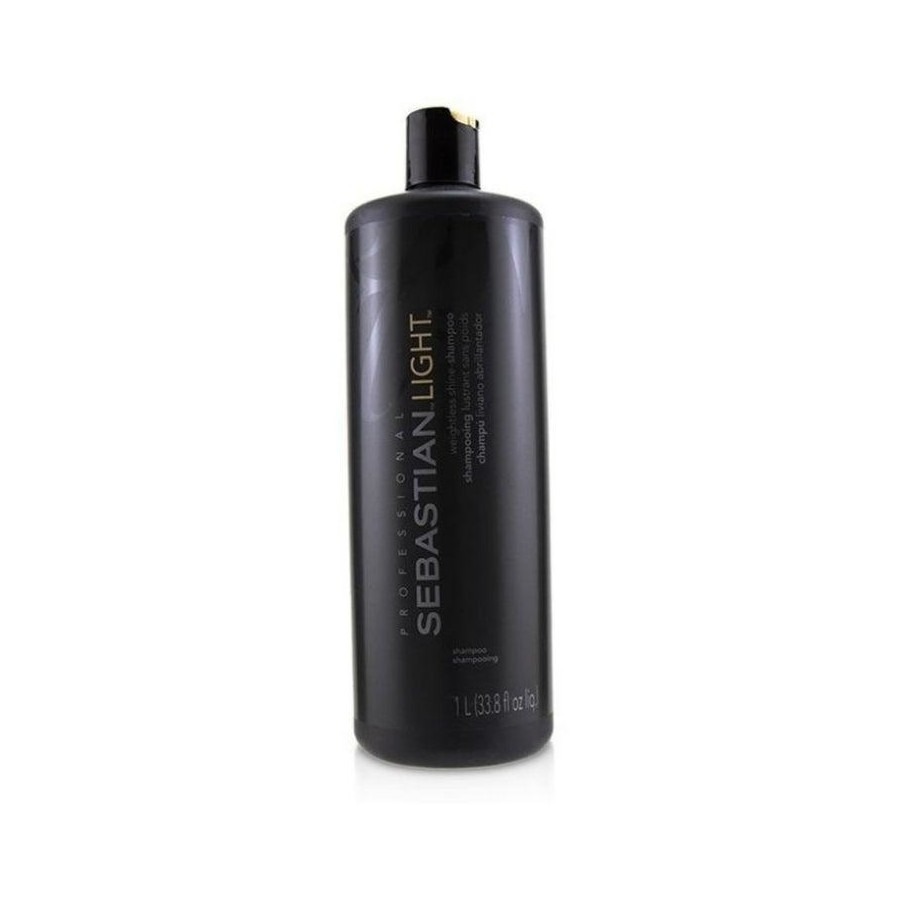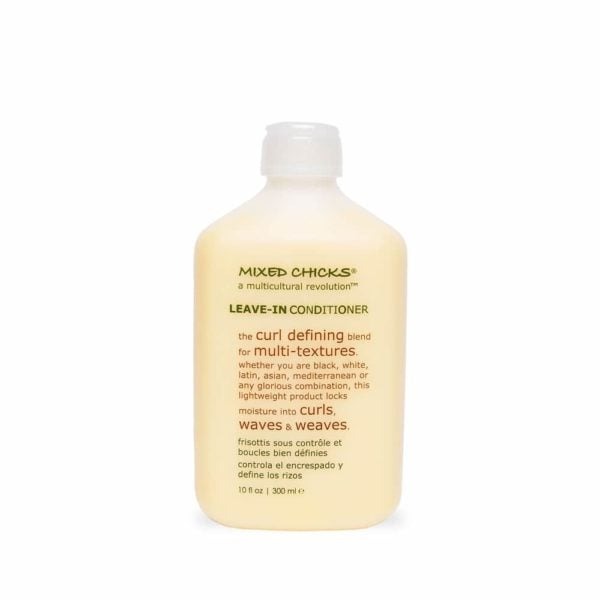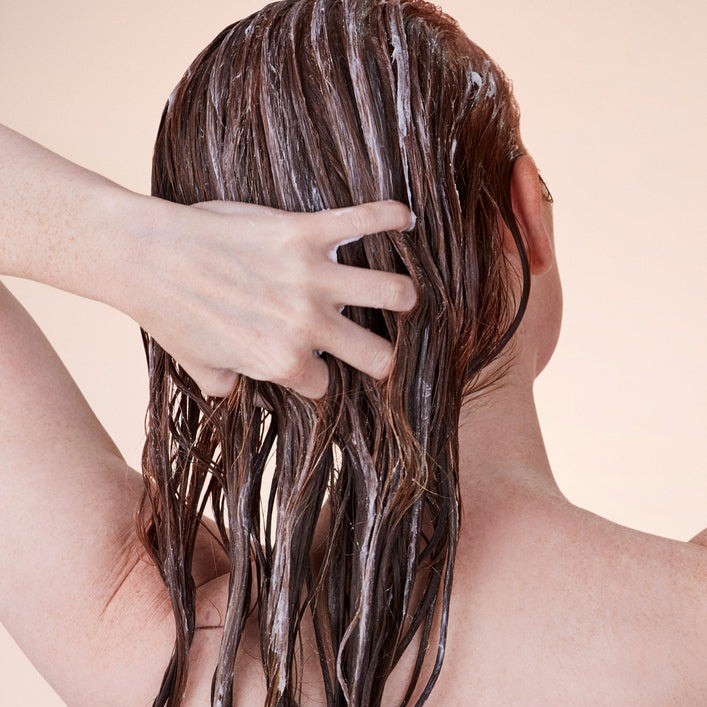The Science of Frizzy Hair: What Causes the Frizz?
Understanding frizz is key to combating it. Frizzy hair occurs when hair cuticles lift. This lifting allows moisture from the air to swell the strands. This results in that all-too-familiar pouf of hair. The main culprits behind frizzy hair usually involve humidity, damage, and dryness. Over-processing through heat styling or chemical treatments can worsen frizz. It can strip hair of natural oils needed for smoothness. Additionally, genetic factors may determine how prone your hair is to frizzing. Curly or wavy hair types may experience frizz more often. This is due to their hair structure, which struggles to retain moisture. Simple changes in your routine can help, though. For example, avoid washing your hair frequently. This can help maintain natural oil levels. By understanding these factors, you’re on your way to selecting the best conditioner for frizzy hair.
Top Ingredients to Look for in Anti-Frizz Conditioners
When shopping for the best conditioner for frizzy hair, certain key ingredients make a difference. These ingredients have properties that help smooth the hair cuticle, lock in moisture, and reduce frizz. Here are some top ingredients to look for:
- Hydrolyzed Proteins: They strengthen and repair the hair structure. Hydrolyzed wheat and silk proteins are popular choices.
- Glycerin: This humectant attracts and retains moisture, keeping hair hydrated.
- Silicones: Ingredients like dimethicone and cyclomethicone create a protective layer. They help tame frizz by preventing humidity from penetrating the hair.
- Natural Oils: Coconut, argan, and jojoba oils deeply nourish hair. They provide essential fatty acids and vitamins, promoting a smooth texture.
- Shea Butter:?Rich in fats, it moisturizes and seals the hair, smoothing the cuticle.
- Keratin: This protein is the building block of hair. Keratin-infused products can help smooth out the frizz.
Seeking these beneficial components will guide you toward the best conditioner for frizzy hair that suits your needs. Pair effective ingredients with smart application techniques for even better results.
The Role of Protein and Moisture Balance in Taming Frizz

Understanding the delicate balance between protein and moisture is crucial for frizz-free hair. Protein strengthens hair fibers, making them less prone to breakage and frizz. However, too much protein without adequate moisture can make hair brittle. The best conditioner for frizzy hair will strike a perfect balance, providing protein to rebuild and strengthen while delivering sufficient moisture to maximize elasticity and shine.
A conditioner rich in hydrolyzed proteins can fill in porous areas of the hair shaft. This fortifies the hair and prevents moisture from escaping. Moisture is just as vital. It keeps hair pliable and less likely to snap or frizz. Ingredients such as glycerin and natural oils come into play here. They lock in hydration and maintain the right level of moisture.
When protein and moisture are in harmony, your hair has what it needs to fight frizz. Strands are less likely to react to humidity and stay smooth. In your hair care routine, alternate between protein-rich and moisture-rich products. This ensures your hair maintains its strength while staying soft and manageable. To find the best conditioner for frizzy hair, look for products that tout a balanced formula. They should actively promote both protein enrichment and moisture retention for the best results against frizz.
Expert Picks: High-Quality Conditioners for Different Hair Types
Finding the best conditioner for frizzy hair can be a game-changer for your hair care routine. Different hair types require unique formulas to tame frizz effectively. Here’s a list of expert-recommended conditioners, each targeted for specific hair types:
- For Fine Hair: Opt for lightweight conditioners. Look for volumizing products that contain hydrolyzed proteins. They shouldn’t weigh your hair down.
- For Thick Hair: Choose conditioners rich in natural oils and shea butter. They provide the intense hydration that thick hair often needs.
- For Curly Hair: Curly hair benefits from conditioners with glycerin and oils. They define curls and combat frizz.
- For Color-Treated Hair: Color-treated hair requires gentle care. Pick conditioners with keratin and protective silicones to prevent color fade and frizz.
- For Coarse Hair: Seek out heavy creams with a blend of proteins and moisture. They will help soften and smooth coarse strands.
Selecting the right conditioner can make a noticeable difference in managing frizz. Remember to avoid heavy silicones if you have fine or oily hair. Always prioritize balance between protein and moisture regardless of your hair type. With these expert picks, aim for healthier, smoother, and more manageable hair.
Natural and Organic Options: The Best Eco-Friendly Conditioners

Choosing eco-friendly options not only benefits the environment but can also be healthier for your hair. Natural and organic conditioners often contain pure, plant-based ingredients that provide necessary hydration and frizz control without harsh chemicals. Here are reasons to consider using natural and organic conditioners:
- Environmentally Conscious: These products use sustainable ingredients and eco-friendlier packaging, reducing your carbon footprint.
- Gentle on Scalp and Hair: With fewer synthetic chemicals, they are less likely to cause irritation or build-up.
- Essential Nutrients: Many contain vitamins, minerals, and antioxidants that nourish your hair deeply.
- No Harmful Additives: Free from sulfates, parabens, and silicones, they promote hair health naturally.
When searching for the best conditioner for frizzy hair within natural options, check for certifications like organic or cruelty-free to ensure product purity and ethics. Opt for conditioners with natural oils, aloe vera, or botanical extracts known for their smoothing properties. Your hair, health, and the planet will thank you for making the switch to natural and organic conditioners.
The Importance of Application Technique for Maximum Results
Choosing the best conditioner for frizzy hair is the first step to smoother locks, but it’s not just about what you apply—it’s also how you apply it. Proper application techniques can significantly increase a conditioner’s effectiveness. Here’s how to ensure you’re getting the most out of your anti-frizz conditioner:
- Start with a Clean Slate: Always apply conditioner to freshly washed hair. This helps the ingredients penetrate more effectively.
- Use the Right Amount: Applying too much or too little can lead to underwhelming results. Start with a quarter-sized amount for medium-length hair and adjust as needed.
- Focus on the Ends: The ends of your hair are the driest and most prone to frizz. Concentrate the conditioner here and work your way up, avoiding the roots if they tend to get oily.
- Leave it In: Let the conditioner sit for a few minutes to allow the active ingredients to sink in and work their magic. This step can make a big difference in fighting frizz.
- Rinse with Cool Water: Finish by rinsing with cool water to close the hair cuticles, locking in moisture, and enhancing shine.
- Gentle Drying: Pat your hair with a towel instead of rubbing it. This prevents breaking the hair cuticle, which can cause more frizz.
- Comb Through: Use a wide-toothed comb to distribute the conditioner evenly and detangle gently, minimizing breakage and frizz.
By following these simple yet effective application techniques, you’ll maximize the benefits of the best conditioner for frizzy hair and enjoy smoother, more manageable tresses.
Affordable Choices: The Best Budget-Friendly Conditioners for Frizz Control

Achieving smooth hair doesn’t need to break the bank. You can find the best conditioner for frizzy hair without spending a lot. Affordable conditioners can still provide quality ingredients for frizz control. Here are some pointers for selecting budget-friendly options:
- Look for Hydrating Ingredients: Cheap conditioners with glycerin and natural oils can be just as effective. They lock in moisture and keep hair smooth.
- Avoid Unnecessary Add-ons: Conditioners that feature basic but effective formulas tend to be cheaper. Skip those with fancy packaging or branding.
- Check for Sales and Discounts: Regularly look for deals at local stores or online. You can often find higher-end products at lower prices.
- Buy in Bulk: Larger sizes or value packs can save money over time. They offer more product for a smaller cost per use.
- Read Reviews: Other shoppers’ experiences can guide you. They often highlight which affordable products work well against frizz.
- Store Brands: Some store brands offer quality comparable to pricier names. They can be a smart choice for budget-conscious shoppers.
When you search for the best conditioner for frizzy hair, remember the keywords are ‘effective’ and ‘affordable.’ By focusing on ingredients over brand name, you can enjoy frizz-free hair without overspending.
How to Integrate Anti-Frizz Conditioners into Your Hair Care Routine
Integrating the best conditioner for frizzy hair into your routine is straightforward. Keep your hair type in mind and use conditioner after every shampoo. For maximum benefit, alternate between moisture-rich and protein-based conditioners. Follow the label’s instructions for how long you should leave it in your hair.
Here’s a step-by-step guide to ensure effectiveness:
- After Shampooing: Squeeze out excess water. Apply conditioner focusing on mid-length to ends.
- Comb Through: Use a wide-tooth comb. This distributes the conditioner and untangles knots, reducing breakage.
- Timing: Leave the conditioner in for the time specified on the bottle. It’s usually a few minutes.
- Rinsing. Use cool water to rinse your hair. This seals cuticles and locks in moisture.
- Drying: Gently pat hair with a towel. Avoid rough movements that can cause frizz.
- Styling: If using heat tools, apply a heat-protectant product to keep hair smooth.
Consistency is key. Stick to a routine for the best results against frizz. Always adjust conditioner use if you notice your hair becoming too heavy or still frizzy. With patience and proper application, you’ll achieve smoother, more manageable hair.
